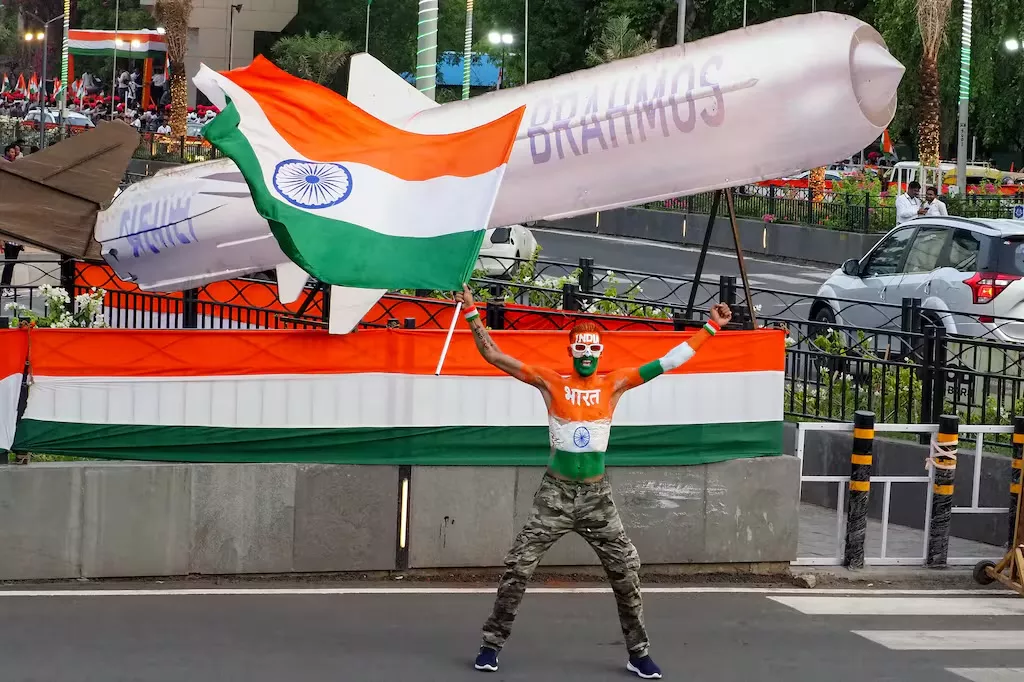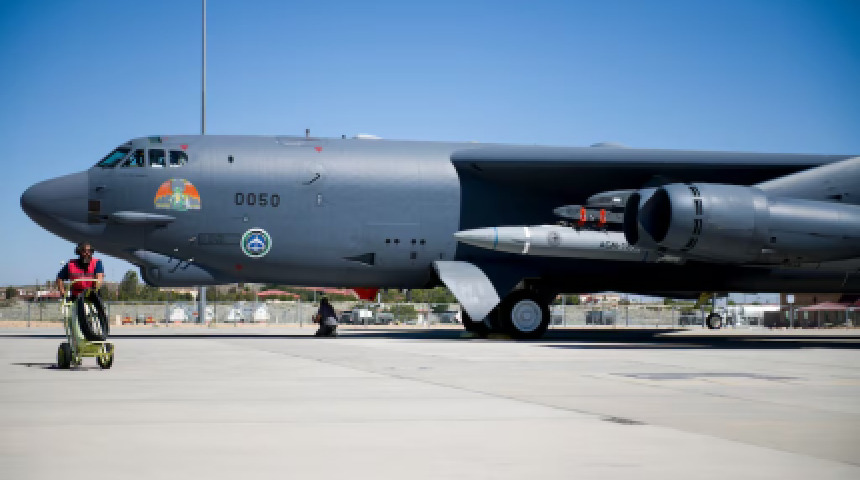中印飛彈競賽升溫 印度「整合火箭軍」陷延宕 專家警告:亞洲或進入導彈新冷戰

(Sam Panthaky/AFP via Getty Images)
隨著中國快速擴張中遠程彈道飛彈庫存,印度也計畫成立「整合火箭軍(Integrated Rocket Force, IRF)」,以強化非核飛彈作戰能力。然而,這項計畫自2021年提出以來進展緩慢,至今仍停留在構想階段,導致印度在戰略層面上恐難匹敵中國的導彈投射能力。
美國丹佛大學和平與安全學教授 Debak Das 表示,IRF 的目標在於「縮小印度在對中常規軍事能力上的落差」,藉由非核導彈提升戰場主動性,避免在中印邊境(LAC)衝突中過早升級至核武層級。然而,觀察家指出,這支部隊迄今仍未成形,戰略意義被削弱。
印度智庫「觀察家研究基金會(ORF)」學者 Kartik Bommakanti 指出,IRF 原構想為陸、海、空三軍聯合指揮機構,任務類似中國的「火箭軍(PLARF)」但限於常規彈道飛彈。該部隊將整合 BrahMos 巡弋飛彈、Pralay 戰術彈道飛彈、Pinaka 多管火箭系統 等武器,但目前最大射程仍僅500公里,僅能覆蓋西藏高原等前線地區。
相比之下,中國的 東風-26(DF-26)、東風-100(DF-100) 可達2000公里射程,能從中國內陸深處精準打擊印度全境。Bommakanti 警告:「中國可從內陸發射導彈攻擊印度主要城市,而印度若無遠程常規導彈,將難以對等回擊。」
美方智庫「戰略與國際研究中心(CSIS)」分析指出,IRF 的推動還面臨軍種間權限之爭──陸軍與空軍不願放棄對飛彈與發射系統的控制權,導致整合進度受阻。
專家擔憂,一旦中印爆發邊境衝突,雙方可能同時動用常規導彈互相攻擊,即使無搭載核彈頭,也可能引發「有限核戰誤判」的風險。Das 指出:「印度若採用深度打擊學說,中國也可能以同樣模式回應。」
此外,印度的火箭軍構想也刺激了巴基斯坦。伊斯蘭堡近日宣布將成立「陸軍火箭部隊(Army Rocket Force)」,明顯是對印度IRF計畫的直接回應,凸顯南亞三國導彈軍備競賽的升溫。
分析人士指出,印度若要建立真正的常規威懾力,除需完善火箭軍體系外,還需加速發展「超音速與高超音速武器」,以彌補射程與打擊能力的差距。
🔍 三大觀察重點
1️⃣ 導彈自主與常規威懾的戰略啟示
印度試圖透過非核導彈建構常規威懾能力,顯示中小型強權在面對核國家時,須以「彈道+資訊整合」為核心建立防禦。台灣在應對飛彈威脅時,可借鏡「非核威懾」思維。
2️⃣ 聯合火箭軍反映現代軍種整合困境
印度推動 IRF 面臨三軍權限爭奪,對台灣國防改革是一項警示:聯合作戰架構若無明確權責與資訊鏈整合,將難以形成實戰效能。
3️⃣ 亞洲導彈平衡或將成新冷戰主軸
中印巴三方的飛彈發展形成新的區域「導彈三角」。台灣在地緣政治上應持續觀察印度的「非核導彈路線」,作為防衛現代化的重要參考。
India’s Integrated Rocket Force Faces Delays as China’s Missile Arsenal Grows — Analysts Warn of a New “Missile Cold War” in Asia
Facing China’s expanding missile capabilities, India’s plan to establish an Integrated Rocket Force (IRF) remains stalled, raising concerns that the country could be outgunned in a potential border conflict.
“The IRF is designed to bridge the conventional warfighting gap between India and China,” said Dr. Debak Das of the University of Denver. “It’s meant to allow India to respond with precision strikes without escalating to the nuclear threshold.”
Proposed in 2021, the IRF aims to unify the Army, Navy, and Air Force under a single command for non-nuclear missiles. However, progress has been slow, hindered by inter-service rivalry.
The IRF would oversee systems such as BrahMos, Pralay, and Pinaka, but their range of under 500 km limits India’s reach compared to China’s DF-26 and DF-100, which can hit targets 2,000 km away.
Analyst Kartik Bommakanti from the Observer Research Foundation noted that “China can strike deep into Indian territory from within its mainland, while India lacks equivalent reach to threaten China’s core regions.”
The United States–based CSIS has also warned that without organizational clarity, India’s missile systems risk being fragmented, reducing strategic efficiency.
Adding to tensions, Pakistan announced the creation of its own Army Rocket Force, likely in reaction to India’s IRF proposal. Analysts warn this could trigger a regional arms race in South Asia.
🔍Three Key Observations
1️⃣ Conventional deterrence without nuclear escalation
India’s pursuit of a non-nuclear Integrated Rocket Force reflects an effort to build credible deterrence below the nuclear threshold — a model relevant to Taiwan’s defense modernization. The lesson: deterrence can rely on precision, not just payload.
2️⃣ Joint command and service integration challenges
The IRF’s slow progress highlights the difficulty of integrating multiple branches under one missile command. Taiwan’s defense system can learn from this — emphasizing unified command, communication, and targeting networks to avoid redundancy.
3️⃣ Asia’s emerging “Missile Cold War”
As China, India, and Pakistan expand missile forces, a new regional equilibrium is forming. For Taiwan, observing India’s “conventional missile strategy” offers insights into maintaining deterrence amid regional arms races without triggering escalation.




回應文章建議規則: